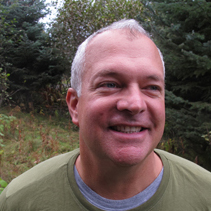Anyone coming over Baycrest Hill these days encounters a stark new addition to the Kachemak Bay skyline: Buccaneer Oil’s jack-up drilling rig “Endeavour.”
For some, the image harkens back to the days of Jay Hammond and the fight to put fish and the families they support before heavy industry.
For others, the rig looks like jobs and money.
Each side, of course, is right. The question then becomes what type of economic development do we want for Kachemak Bay?
Ever since “oil money” allegedly built the Homer High School, the lower Kenai Peninsula has been hammered to accept economic development the way it’s done up north. We saw this stark dynamic unfold when politicians up the road, backed by Gov. Sean Parnell, held the gas line to Homer hostage for several years. Do it our way, they said, or suffer the consequences.
But putting all our economic chips into the basket of finite resources such as oil and gas has its obvious drawbacks. While there was collective handwringing at the loss of taxes and jobs when the Nikiski fertilizer plant closed a few years ago, we knew the day the plant opened that it would close when gas supplies got too tight or prices got too high. It’s just the boom and bust nature of oil and gas development.
In the Kachemak Bay region, we’ve chosen a different economic model. Fishing, tourism and various service industries fuel our economy. While we’re certainly not immune from the inevitable ups and downs of economic cycles, we’ve embraced a diverse economy that capitalizes on the incredible sustainable resources around us. If we manage our resources right, we can sustain a strong local economy indefinitely.
The new wave of oil and gas development in Cook Inlet is the result of numerous factors, but none more than the so-called “Stampede Act,” which creates massive tax credits of $25, $22.5 and $20 million dollars for the first three corporations to drill into deep Cook Inlet reservoirs. These subsidies prompted the Petroleum News to call Cook Inlet oil and gas “almost free,” with oil and gas producers enjoying “one of the most favorable tax and royalty environments in the United States.”
These market distortions tilt the playing field to favor oil and gas corporations over renewable energy projects that can produce long-standing jobs and low cost, sustainable power to local families. As one economist famously noted “free markets are a wonderful thing, we should try them sometime.”
Neither Buccaneer nor Escopeta inspires confidence. While there are good men and women working these rigs, the corporate managers have shown a remarkable penchant for cutting corners and ignoring local concerns.
Buccaneer, for example, violated the Clean Water Act more than 850 times for unpermitted seismic blasting on the Kenai River flats earlier this year, though the Army Corps of Engineers generously granted them an after-the-fact permit with no fines. Then they ran out of money and stopped paying local workers until a New York investment firm bailed them out.
Buccaneer also has gotten low grades for community outreach, refusing to meet with local citizens and groups and stiff-arming local media (but now they’ve engaged a fancy public relations firm out of New York City so presumably things will change). And like most corporations, Buccaneer hired a team of lawyers to create a half dozen limited liability subsidiaries to shield its managers and directors from any risk that may flow from, say, a capsized rig or a drilling well blow-out in Cook Inlet.
Based on its public statements, Buccaneer says it will still drill a well in Upper Cook Inlet before the ice season Nov. 1, and then move the rig to drill off Anchor Point this winter. I don’t believe them.
Instead, there’s a growing prospect Buccaneer will store its rig in Kachemak Bay all winter, and the possibility it will be joined by the Escopeta/Furie rig (Spartan 151), which over-wintered in Port Graham Bay last year. Forget the fact the Kachemak Bay Critical Habitat Area plan flatly prohibits drilling rig storage; Gov. Parnell’s Alaska Department of Fish Game is bending over backwards to ignore the laws around habitat protection to accommodate the oil and gas industry.
One or two rigs in Kachemak Bay this winter will of course mean some jobs and tax revenues to the city (if in fact the rigs are stored on city tidelands), not to mention a radically different skyline. But there are good reasons the residents of Kachemak Bay joined Jay Hammond way back when to keep heavy industry out of our waters.
Cook Inletkeeper will be hosting a special showing of the 1970s documentary film “Alaska: Technology & Time,” on Oct. 18 at 7 p.m. at the Alaska Islands and Ocean Visitor Center. The hour-long film recounts the early days of oil and gas in lower Cook Inlet, and provides a great lens through which to view current events. There will be a question and answer session following the film. Buccaneer Energy has been invited to attend.
Bob Shavelson is advocacy director for Cook Inletkeeper. He’s worked on oil and gas issues in Cook Inlet for over 17 years.


